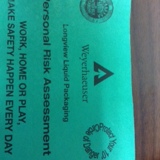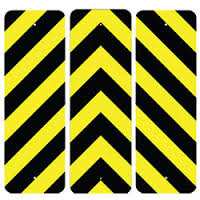Information
-
Document No.
-
Audit Title
-
Client / Site
-
Conducted on
-
Prepared by
-
Location
-
Personnel
1. DESCRIBE THE TASK TO BE PERFORMED
2. WHAT RISK ARE IDENTIFIED AS PART OF THE TASK (REFER TO THE RISK ASSESSMENT CHECKLIST TO ASSIST YOU)
-
2.1. RUSHING - Work at a safe pace, follow safe practices/expectations, complete your risk assessment and re-evaluate when changes occur.
-
2.2. UNEXPECTED EVENTS - Plan and prepare thoroughly, ask "what if" until you're certain the bases are covered, personal awareness at all times (on your surroundings where you are in relation to the work being done, and what others are doing)
-
2.3. FRUSTRATION - Stop, take a minute to calm yourself and develop a different approach to the problem.
-
2.4. FATIGUE - Get enough sleep, ask your coworkers to keep an eye on you, develop and follow a solid job plan, give yourself time to respond to issues. Get help if needed.
-
2.5. COMPLACENCY - Analyze and react to small errors, visual reminders, look for signs in others to increase your awareness.
-
2.6. 5TH STATE DISTRACTION - Use a personal risk assessment, safe buddy and "trigger on your current state" to avoid distraction caused by illness,grieving, personal plans and job change concerns.
-
2.7. HEAVY LIFTING/EXERTION - Proper lifting techniques, mechanical aids,get help.
-
2.8. AWKWARD BODY POSITION - Take the time to plan how to do a task with the available tool, location of the work, etc. to avoid overreaching extending or poor ergonomic body position.
-
2.9. ELECTRIC SHOCK/ARC - Proper isolations/lockout, ensure equipment is De-energized.
-
2.10. - PINCH POINTS/NIPS - Keep hands and body parts clear at all times and out of the "line of fire".
-
2.11. TOOL OR OBJECTS BREAK FREE - Assess for potential pinch or impact points created by the breaking force.
-
2.12. SHARP EDGES -Gloves, tape or otherwise protected edges, file/grind edges smooth.
-
2.13. SLIP,TRIP OR FALL, UNEVEN OR SLIPPERY WORK SURFACES - Guard rails,fall protection,one stair at a time,housekeeping, personal awareness, taking the time to review walking surface. Go around instead of through poor work surfaces.
-
2.14. HEAT, GAS OR VAPOR - Follow the Thermal Extremes recommended practices atmospheric testing, SCBA.
-
2.15. WELDING FLASH/SPARKS/HOT SURFACES - PPE, spark watch,welding screen and or fire extinguisher.
-
2.16. CHEMICAL CONTACT - Isolation/lockout, PPE, MSDS,WHMIS labels, know and follow the required precautions for the chemicals in question.
-
2.17. OVERHEAD HAZARDS - Block doors, time of work, communication between workers, personal awareness.
-
2.18. AIRBORNE CONTAMINANTS, CHEMICAL/LIQUID CONTACT,FLYING PARTICLES - Tightfitting safety glasses, face shield and or goggles.
-
2.22. ADJACENT WORK HAZARDS - Understand the work going on around you, communication between groups, personal awareness.
-
2.20. COMPRESSED AIR - Do not use to clean your clothes, ensure air wand has OSHA approved safety relief devices.
-
2.21. RIGGING OR HOISTING - You must be trained, inspect equipment/ slings verify the weight of the lift and or capacity of lifting equipment.
-
2.19. REPETITIVE MOTION, ERGONOMICS STRESS - Know and respond to your personal limitations, get help, take breaks, stretch before and after tasks vary job tasks, report discomfort.
WHAT SOLUTIONS WERE IMPLEMENTED TO MANAGE THE RISKS?
IS THERE ANY FOLLOW-UP REQUIRED?
DATE
-
Select date












